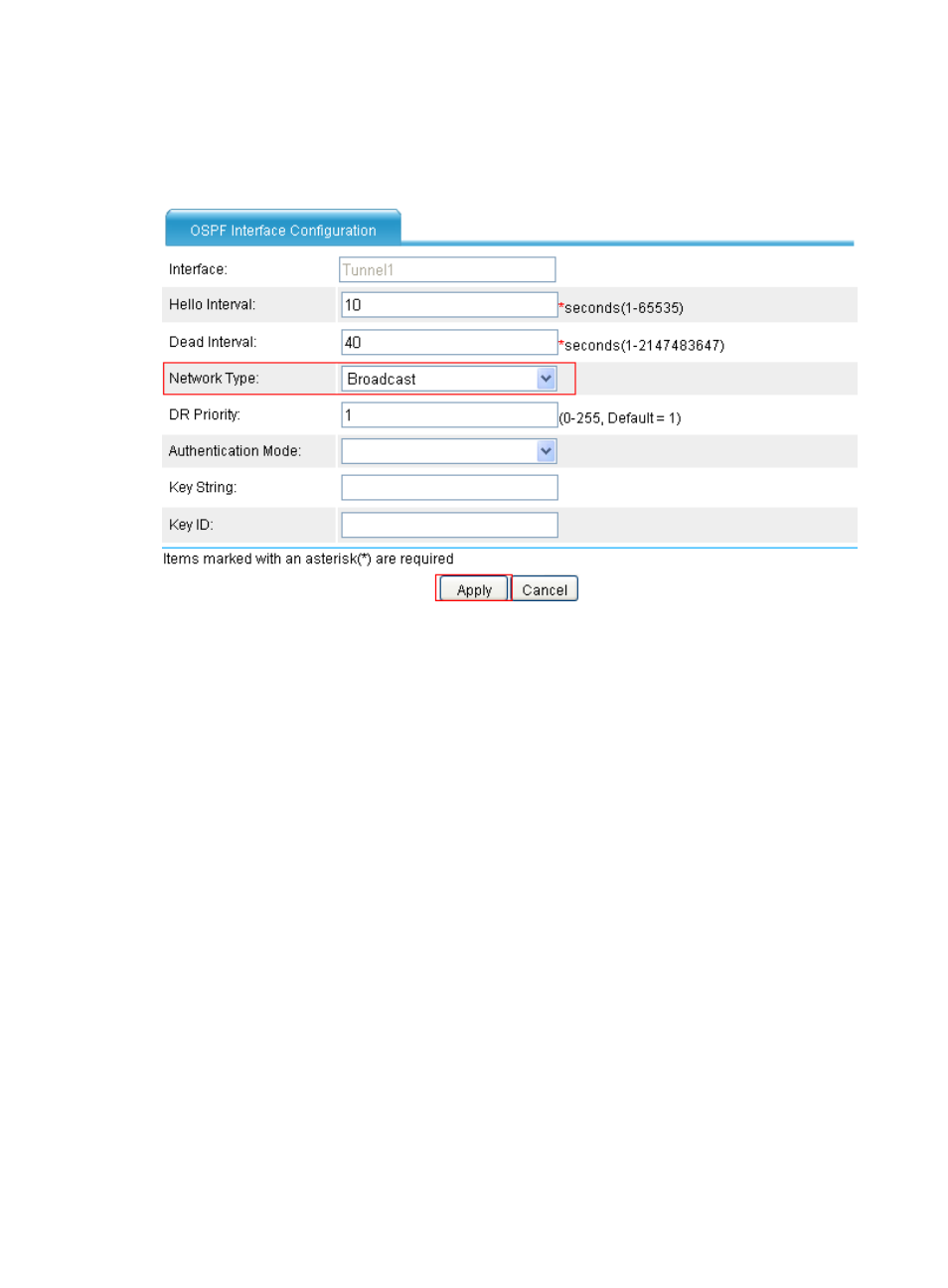Configuring hub 2 – H3C Technologies H3C SecPath F1000-E User Manual
Page 441

429
d.
Enter the area ID 0, select Normal as the area type, enter the network address 10.0.1.0, select
the network mask 0.0.0.255, and then click Add Network. Click Apply.
e.
Click More>> to perform OSPF interface configuration.
Figure 316 Configuring OSPF interface
f.
Select Broadcast as the network type and click Apply.
g.
OSPF configurations for tunnel interface Tunnel2 are similar to those for Tunnel1. The
difference is that you must add subnet 10.0.2.0/0.0.0.255 to OSPF area 1.
Configuring Hub 2
Figures are omitted.
1.
Configure IP addresses for the interfaces. (Details not shown)
2.
Configure tunnel interface Tunnel1 for VPN domain vpn1:
a.
From the navigation tree, select VPN > DVPN > Client, and then click Add.
b.
Select the tunnel encapsulation mode UDP, enter the tunnel interface number 1, enter the IP
address/mask 10.0.1.2/24, select security zone Management for the tunnel interface, select
the tunnel source interface GigabitEthernet0/1, and enter the VPN domain name vpn1, the
VAM server address 192.168.1.22, the backup VAM server address 192.168.1.33, the VAM
client username dvpn1hub2, the VAM client password dvpn1hub2, and the VAM client
pre-shared key 123.
c.
Select Enable IPsec.
d.
Select the IPsec authentication method Pre-Shared Key and then enter abcde in the field.
e.
Select IP Address as both the remote ID type and the local ID type.
f.
Click Apply.
3.
Configure tunnel interface Tunnel2 for VPN domain vpn2:
a.
From the navigation tree, select VPN > DVPN > Client, and then click Add.
b.
Select the tunnel encapsulation mode GRE, enter the tunnel interface number 2, enter the IP
address/mask 10.0.2.2/24, select the security zone Management for the tunnel interface,
- H3C SecPath F5000-A5 Firewall H3C SecPath F1000-A-EI H3C SecPath F1000-E-SI H3C SecPath F1000-S-AI H3C SecPath F5000-S Firewall H3C SecPath F5000-C Firewall H3C SecPath F100-C-SI H3C SecPath F1000-C-SI H3C SecPath F100-A-SI H3C SecBlade FW Cards H3C SecBlade FW Enhanced Cards H3C SecPath U200-A U200-M U200-S H3C SecPath U200-CA U200-CM U200-CS
